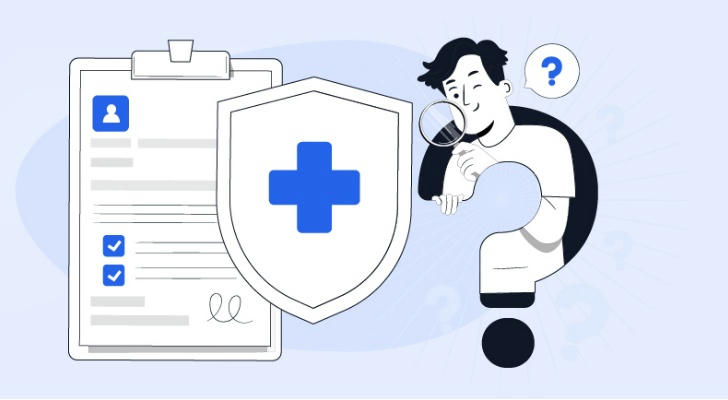How to get the most out of U.S health insurance
How to get the most out of U.S health insurance
Navigating the complexities of U.S. health insurance can be daunting, but understanding how to make the most of your coverage is essential for managing healthcare costs and ensuring access to necessary services. The first step in this process is to thoroughly understand your specific health insurance plan. This includes familiarizing yourself with key terms such as premiums, deductibles, co-pays, and out-of-pocket maximums. By knowing the details of your coverage, you can make informed decisions about your healthcare and avoid unexpected expenses.
Understand Your Health Insurance Plan
Review Your Policy
The first step in maximizing your health insurance benefits is to thoroughly review your policy. Familiarize yourself with key terms such as:
Deductibles: The amount you pay for covered health care services before your insurance plan starts to pay.
Co-pays: A fixed amount you pay for a covered service, usually when you receive the service.
Out-of-pocket maximums: The most you will have to pay for covered services in a plan year.

Understanding these terms will help you make informed decisions about your healthcare expenses and avoid unexpected costs.
Know Your Coverage
Insurance plans often vary significantly in what they cover. Make sure you understand:
Covered services: What types of medical treatments, procedures, and medications are included in your plan?
Preventive care: Many plans cover preventive services at no cost, including annual check-ups, vaccinations, and screenings. The Affordable Care Act (ACA) mandates that these services be covered without cost-sharing for patients.
Utilize Preventive Care
Preventive care is one of the most underutilized benefits in health insurance plans. Regular preventive services can help catch potential health issues early and reduce long-term healthcare costs. Here’s how to make the most of preventive care:
Schedule Regular Check-ups
Take advantage of no-cost preventive services by scheduling regular check-ups and screenings. These may include:
Annual physical exams
Cancer screenings (e.g, mammograms, colonoscopies)
Immunizations (e.g, flu shots, HPV vaccines)

By staying up-to-date on these services, you can maintain better health and potentially avoid more serious medical issues down the line.
Take Advantage of Wellness Programs
Many insurers offer wellness programs that may include discounts on gym memberships, fitness classes, or weight management programs. Participating in these programs can improve your overall health and may also lower your premiums over time.
Be Proactive with Healthcare Needs
Schedule Necessary Appointments
If you have pending medical procedures or specialist appointments recommended by your healthcare provider, schedule them before the end of the year. This ensures that costs are covered under your current insurance plan. Additionally, booking annual check-ups, screenings, and vaccinations can help catch any potential health issues early.
Utilize Remaining Benefits
As the calendar year approaches its end, assess your remaining benefits. If you are close to meeting your deductible or out-of-pocket maximum, consider scheduling elective procedures or appointments that you may have been postponing. Once you reach these limits, your insurance typically covers 100% of eligible expenses for the rest of the year.
Manage Prescription Costs
Prescription medications can be a significant expense if not managed properly. Here are some strategies to help reduce these costs:
Review Your Drug Formulary
Most insurance plans have a formulary that categorizes medications based on cost-sharing tiers. Familiarize yourself with this list to identify which medications are covered at lower costs.
Opt for Generic Medications
Generic medications are often much cheaper than their brand-name counterparts but offer the same effectiveness. Always ask your doctor if a generic option is available for any prescribed medication.
Use Mail-Order Pharmacies
Many insurance plans offer mail-order options for maintenance medications. This can save you money and time by allowing you to receive a 90-day supply at a reduced cost.
Stay In-Network
Using in-network providers is one of the most effective ways to minimize healthcare costs. Here’s how to ensure you’re maximizing this benefit:
Verify Provider Networks
Before scheduling appointments, confirm that your healthcare provider is in-network to avoid unexpected charges. Out-of-network providers often result in higher costs.
Understand Referral Requirements
Some plans require referrals from primary care physicians to see specialists. Familiarize yourself with these rules to ensure coverage.
Keep Detailed Records
Maintaining organized records of all medical expenses is crucial for effective management of your health insurance:
Document all receipts and bills: Keep track of what you pay out-of-pocket for medical services and prescriptions.
Review Explanation of Benefits (EOB) statements carefully to ensure that charges align with what was billed by providers.

This documentation will be invaluable if you need to file claims or dispute charges with your insurer.
Explore Additional Resources
Many insurance companies provide additional resources that can help you manage your healthcare effectively:
Nurse Hotlines
Most insurers offer access to nurse hotlines where you can ask questions about symptoms or treatment options at any time. This can help you make informed decisions about seeking care.
Online Portals and Mobile Apps
Take advantage of online portals or mobile apps provided by your insurer. These tools often allow you to track claims, view benefits, find providers, and schedule appointments conveniently.
Case Study 1: James' In-Network Provider Strategy
Background: James is a 60-year-old retiree who needed ongoing treatment for a chronic condition. He was initially seeing an out-of-network specialist, resulting in high out-of-pocket costs.
Action Taken: After reviewing his insurance policy, James learned that he could save significantly by choosing an in-network provider. He researched available specialists within his network and found one with excellent reviews.
Outcome: By switching to an in-network specialist, James reduced his co-pays and overall treatment costs. He also discovered that this new provider offered additional services that enhanced his treatment plan, further improving his health outcomes while maximizing his insurance benefits.
Case Study 2: Karen's Family Wellness Approach
Background: Karen is a 38-year-old mother of two who wanted to ensure her family's health needs were met while maximizing their insurance benefits.
Action Taken: Karen reviewed their family health insurance plan and discovered that it included coverage for various wellness programs, such as fitness classes and nutritional counseling. She enrolled her family in these programs and scheduled annual check-ups for everyone.
Outcome: By taking advantage of wellness benefits, Karen not only improved her family's overall health but also fostered healthy habits among her children. The preventive care visits helped catch potential health issues early, ultimately leading to lower healthcare costs over time.
Conclusion
These case studies illustrate various strategies individuals can employ to maximize their American health insurance benefits. From utilizing preventive care services and strategically planning procedures to leveraging HSAs and choosing in-network providers, there are numerous ways to make the most of health insurance coverage. By being proactive and informed about their policies, individuals can enhance their healthcare experiences while reducing out-of-pocket expenses.
